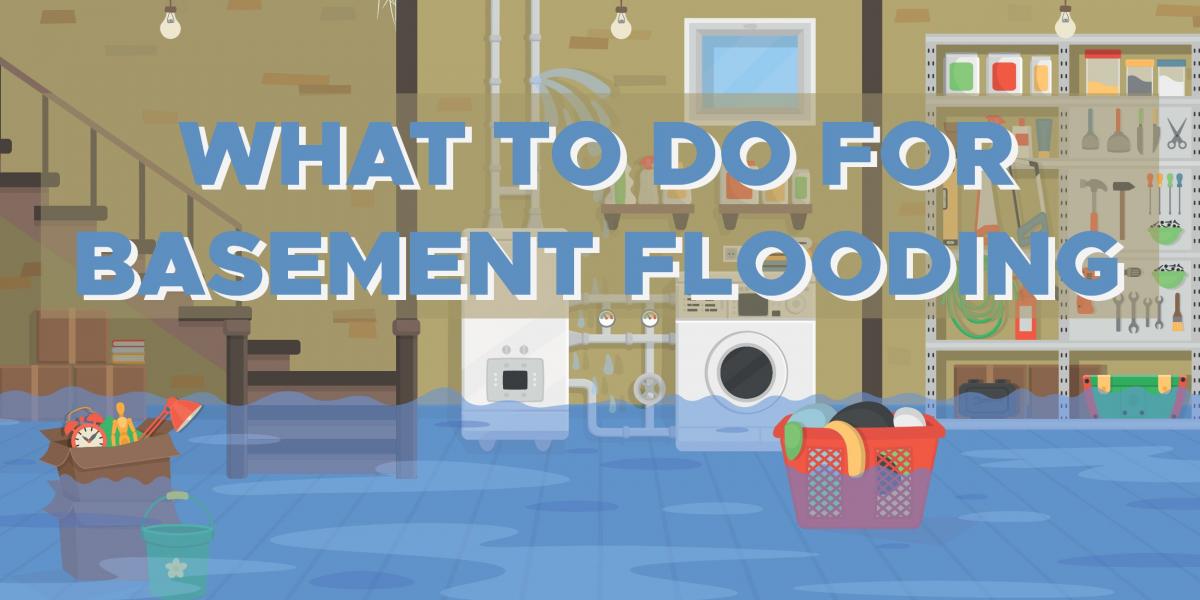What to do for basement flooding
Your basement recently flooded from a weather event, now what? Read the below tips on what to do in the immediate aftermath of a basement flooding:
Put Safety First
- If your basement is flooded, before you enter it, make sure to put safety first. A flooded basement has the ability to pose an electrical hazard to you and your family members, so if possible, turn off the circuit breakers to your basement, or contact an electrician to help you assess whether it’s safe to enter the basement for water removal or not. Any electronics that are in contact with floodwater are unsafe!
Document the Damage
- Throughout the entire process, including the removal of water, and afterwards, document the process of the flooding and damage through photos so that you are able to submit them to your insurance company (more below).
Move Important Items to a Dry Area
- Once it is safe to enter the basement, remove important items, upholstered furniture, or items in boxes that are standing in water and bring them to a dry area.
- Be careful though – if water has been standing for too long, it can soon become dangerous to enter and the water removal process may require additional assistance by professionals.
Remove the Water
- Once you have cleared any important items, it is time to start the water removal process. If your basement is flooded, and you have a sump pump, then it has obviously failed or the flooding is too much for it to handle. A pump won’t remove all the water from your basement, so use a mop and towels to clean up the rest.
- If you have high levels of water, we recommend calling the Oakland Police Department at (201) 337-6171 for a pump-out, or a third-party contractor.
- It is important that you remove water as quickly as possible, as a damp environment gives mold the change to grow, which could compound property damage costs.
Dry the Area
- Once you have removed the water, your basement will not dry on its own. To assist in the drying process, use fans or industrial blowers, as well as dehumidifier and dry mops to help remove any excess water and minimize the chance of mold.
Call your Insurance Company
- Now that the area is cleaned up and safe, call your homeowners insurance to file a claim for damages. Homeowners insurance and renters insurance often requires special flood insurance for flooding caused by mother nature, but it is always a good idea to call and report the claim, even if it is not covered. Flood coverage is an add-on to your regular policy, so you’ll want to be sure you’re covered before you need it. Most standard insurance policies cover flood damage caused by appliance failure or a burst pipe.
Clean, Sanitize, Deodorize
- Use soap and warm water to thoroughly clean all walls that came in contact with water. Along with your dehumidifier and blowers, HEPA air purifier help filters out mold spores and allergens.
- You should check your basement every day after the flood, and keep an eye out for mold. If you see a suspicious-looking spot, clean the area with bleach and warm water. Third party contractors are trained in cleaning, sanitizing and deodorizing from this type of damage. If needed, give them a call!
Prevent Future Floods
- After heavy rain and/or flooding are over, try to figure out what caused the issue. Did a heavy storm flood your lawn and drain into the basement? Do you have cracks in your foundation? Do you need to replace your sump pump or upgrade it to a newer model? Talk to professionals to learn how to update make improvement or repairs to prevent another flood.


